Difference between revisions of "Hygiene and Health focused promotion"
(→External links) |
(→External links) |
||
| Line 43: | Line 43: | ||
===External links=== | ===External links=== | ||
| + | * [http://www.pseau.org/outils/biblio/index.php?d=2756&l=fr&vue_pgm_o_tout=1&motclef%5B%5D=129&tri1=titre Affiches de sensibilisation Hygiène et Assainissement de Tessaoua] | ||
* [http://www.pseau.org/outils/biblio/index.php?d=4999&l=fr&vue_pgm_o_tout=1&motclef%5B%5D=129&tri1=titre A l'eau les mains! Quand te laver les mains? Comment te les laver?] | * [http://www.pseau.org/outils/biblio/index.php?d=4999&l=fr&vue_pgm_o_tout=1&motclef%5B%5D=129&tri1=titre A l'eau les mains! Quand te laver les mains? Comment te les laver?] | ||
* [http://www.pseau.org/outils/biblio/index.php?d=1598&l=fr&vue_pgm_o_tout=1&motclef%5B%5D=129&tri1=titre Affiche: Mesures contre la diarrhée] | * [http://www.pseau.org/outils/biblio/index.php?d=1598&l=fr&vue_pgm_o_tout=1&motclef%5B%5D=129&tri1=titre Affiche: Mesures contre la diarrhée] | ||
Revision as of 01:03, 8 October 2014
A Plan India supported animation film
on "WASH" (in Hindi)
Hygiene and Health-focussed promotion refers to promotional activities which take the hygiene and the health of the user as the main focus in promotion activities, as contrasted to, for example, increased status from the use of a branded product, multiple use promotion, or appealing to emotions such as disgust, as in the case of Community-Led Total Sanitation. Hygiene and Health-focused promotion is in many places the conventional approach to promote better sanitation and water services and to stimulate demand for improved services.
Hygiene is behaviour which serves to prevent illness. Hygienic behaviour also helps to keep people and their environments clean, ordered and attractive. Three practices have been shown to be particularly effective: handwashing with soap, the removal of sanitation products from the household environment, and the home treatment of drinking water. Each of these interventions has been shown to reduce the incidence of diarrhoeal diseases by about 35% 1 An excellent overview of Hygiene promotion is available at WELL factsheet - Hygiene promotion at the WELL website, which provides common falacies, key principles and many references.
Hygiene promotion as a component of a complete package
Hygiene promotion is most effective in combination with improved, affordable, and accepted water and sanitation interventions 2. One reason for this is that although hygiene promotion can also improve health in the absence of improved facilities, it is often the improvements in sanitation and water facilites, such as a pit latrine instead of open defecation, or a tippy tap for hand washing, which enable the new hygienic behaviour.
For this reason, priority should be given to making hygiene promotion a separate component of a complete water and sanitation programme. This can also be reversed: improvements in The Hygiene Improvement Framework 3, for example, uses a combined approach consisting of Access to Hardware (water supply systems, improved sanitation facilities, etc.), an Enabling Environment (Policy improvements, community organization, financing, etc), and Hygiene Promotion (Communication, Social mobilization, community participation, etc.).
Hygiene as part of broader health campaigns
Focus on health promotion for water, sanitation and hygiene to stimulate improved services and practices can also be combined with broader health campaigns. A good example is the 'Blue Star' ('Estrella Azul') campaign developed in Nicaragua, in which the local ministries of Health, Education and the National Water Supply agency, worked together with many local NGO's, and with technical support from USAID's Environmental Health Project and John Hopkins University4, 5
Behavioural change and the private sector
Changing behaviour is very difficult. Companies are very succesful at changing behaviour, as the very succesful efforts to get soap in almost every household around the world show. Therefore, knowledge sharing between the public sector, the private sector and NGO's can be very beneficial, and Public-Private Partnerships are a good possibility here. This type of cooperation has been the basis of the Global Public-Private Partnership for Handwashing6.
Field experiences
The following projects utilize hygiene and health promotion.
 Life - WASH |
 MWA-LAP: Guatemala |
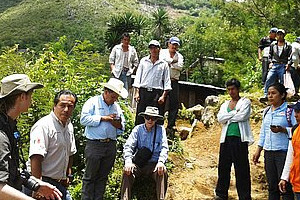 MWA-LAP: Mexico |
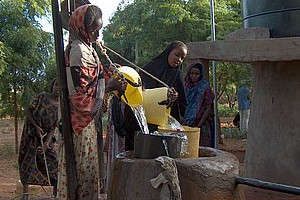 Safe water for Wajir |
 Water, Food & Sanitation for School + Community | ||
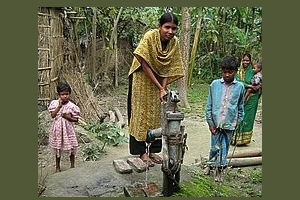 WaSH program in Rural Bangladesh |
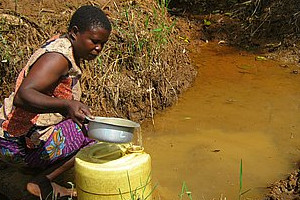 Rwenzori Integrated School WASH Project |
 Community-led WASH and Safe Motherhood |
 Community Water and Sanitation Project |
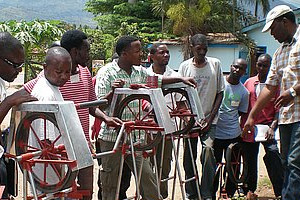 Water training centre in Malawi | ||
 Wateroogst: Konso Woreda/Eshimale |
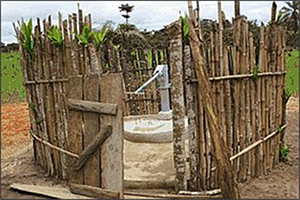 Improved Water Sanitation and Hygiene |
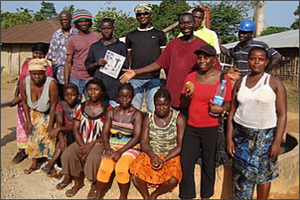 Malima Well Restoration |
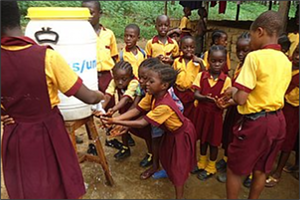 Child Friendly School WASH Project |
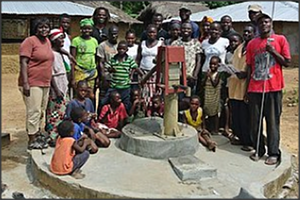 Gboto Well Restoration | ||
External links
- Affiches de sensibilisation Hygiène et Assainissement de Tessaoua
- A l'eau les mains! Quand te laver les mains? Comment te les laver?
- Affiche: Mesures contre la diarrhée
- WELL factsheet - Hygiene Promotion
- WELL factsheet - Health impact of handwashing with soap
- WELL Briefing Note - Making hygiene promotion cost effective
- Background report to WELL Briefing Note on Making hygiene promotion cost effective
- Media/Materials Clearinghouse - a resource for health communication materials. Safe Water Communication section
- Hygiene Central – the website of the Hygiene Centre at the London School of Hygiene & Tropical Medicine
- Scott, B., Curtis, V., Cardosi, J. (2005) The handwashing handbook: a guide to developing a hygiene promotion programme to increase handwashing with soap. World Bank, Washington
References
- ↑ WELL factsheet - Hygiene promotion
- ↑ The value of hygiene promotion, WELL background study
- ↑ The Hygiene Improvement Framework - a comprehensive approach for preventing childhood diarrhea. Produced by EHP, USAID, Worldbank/WSP, WSSCC
- ↑ . [1]
- ↑ Blue Star multimedia materials on the information on the Media/Materials Clearinghouse
- ↑ Global Public-Private Partnership for Handwashing website
